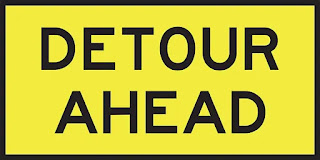To understand what displacement is in practice – that is, the rhythmic shift that occurs when a dissonance appears on a downbeat instead of a target note, and the target note is postponed to the following downbeat or is even played on the upbeat – I propose a beautiful phrase by Arturo Sandoval on There will never be another you (from bar no. 39).
Incidentally, we see with some surprise that, when he puts aside his machismo of the type "I can play more notes per second than any other trumpet player", Arturo is perfectly capable of improvising simple and delicious bebop phrases.
At the end of the first bar, we see that Arturo applies two devices:
- Displacement: instead of playing a target note (on Cm7 he could use C, Eb, G or Bb), Sandoval puts in a B natural and then a Db that just don't fit at all with Cm7. Notes that can be explained, however, as a bypass of the C that appears on the first downbeat of the second bar.
- Anticipation (we will see it better in a later post): Arturo evidently no
longer thinks of the Cm7 (which is also the current harmony) but is already
projected towards the F7 that follows: already “feeling” the target note of
arrival (the C, V^ of F7), he prepares it with a nice bypass.
En passant, we see that on the second quarter of the second
bar Arturo makes a gruppetto (typical trumpet embellishment) thinking of Cm7
and not F7 – but we know perfectly well that on a IIm7 V7 Imaj7 cadence we can
play on the IIm7 as if we were on the V7 and vice versa.
Also very tasty is the use of the #9 and b9 (sol# and sob) on the F7 chord. In some cases, displacement takes the form of a repeated motif – in this case, what matters is not so much the analysis of the target notes “one by one” but the repetition of the motif that aims at a final resolution.
Examples of multiple displacement


No comments:
Post a Comment